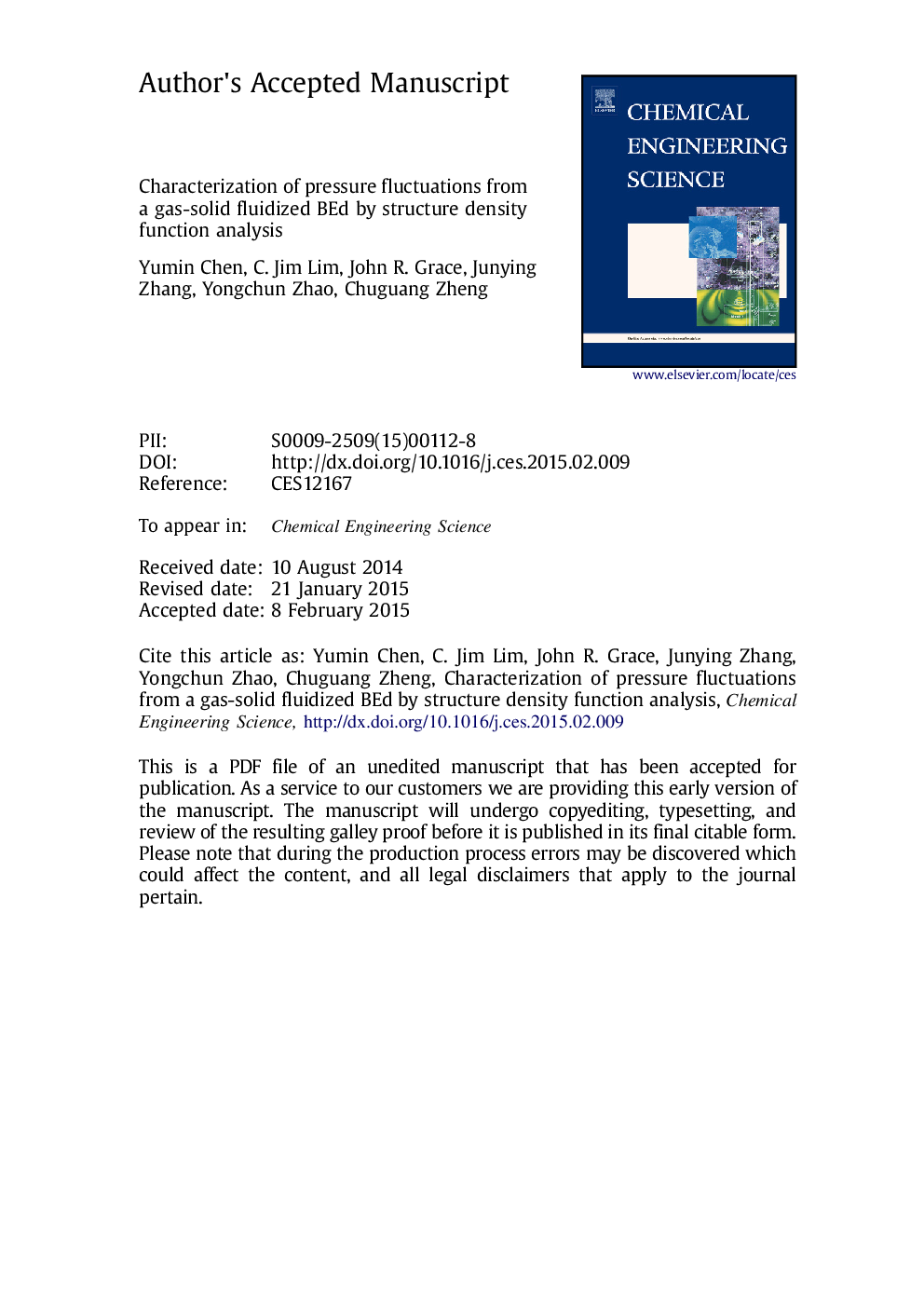| Article ID | Journal | Published Year | Pages | File Type |
|---|---|---|---|---|
| 6590087 | Chemical Engineering Science | 2015 | 37 Pages |
Abstract
Hydrodynamics in a gas-solid fluidized bed reactor were studied based on differential pressure signals measured over several height intervals at different temperatures. Structure density function analysis was utilized to study the dynamics of multi-scale structures. An amplitude division method based on the Gaussian distribution and the Kolmogorov-Smirnov test was developed to divide the structure density distribution of pressure signals into three characteristic regions linked to: I. fine-scale structures, II. small-scale structures, and III. large-scale structures. The frequency of large voids and the uniformity of multi-scale flow structures were quantitatively characterized by parameters SDFb,II and KSDF, respectively. KSDF reached a maximum when large bubbles or slugs dominated the flow, then decreased until it remained almost constant in the turbulent flow regime. Structure density function analysis showed that increasing the operating temperature enhanced the transition of flow regimes, while the transition direction was determined by the superficial gas velocity. Increased gas velocity and decreased minimum fluidization velocity at higher temperature were major factors promoting earlier flow regime transitions. The frequency of large-scale structures decreased at higher temperature for the same flow regime.
Related Topics
Physical Sciences and Engineering
Chemical Engineering
Chemical Engineering (General)
Authors
Yumin Chen, C. Jim Lim, John R. Grace, Junying Zhang, Yongchun Zhao, Chuguang Zheng,
